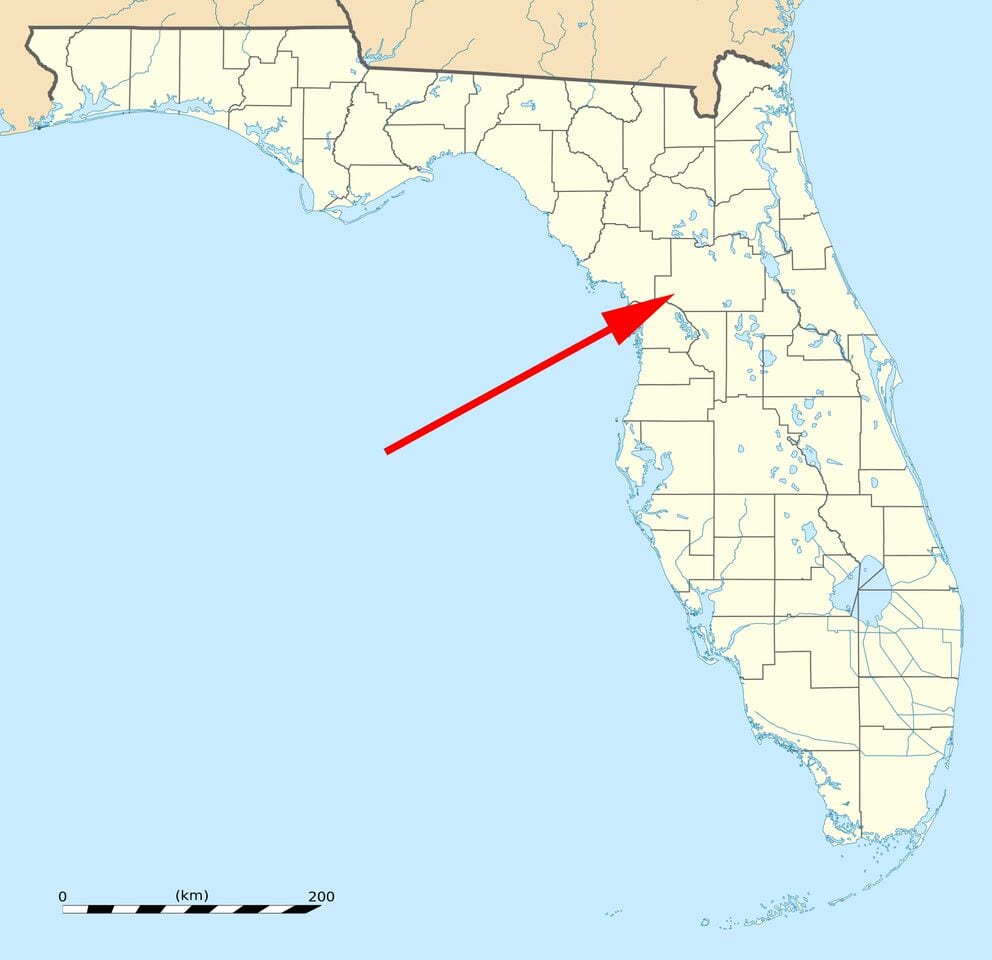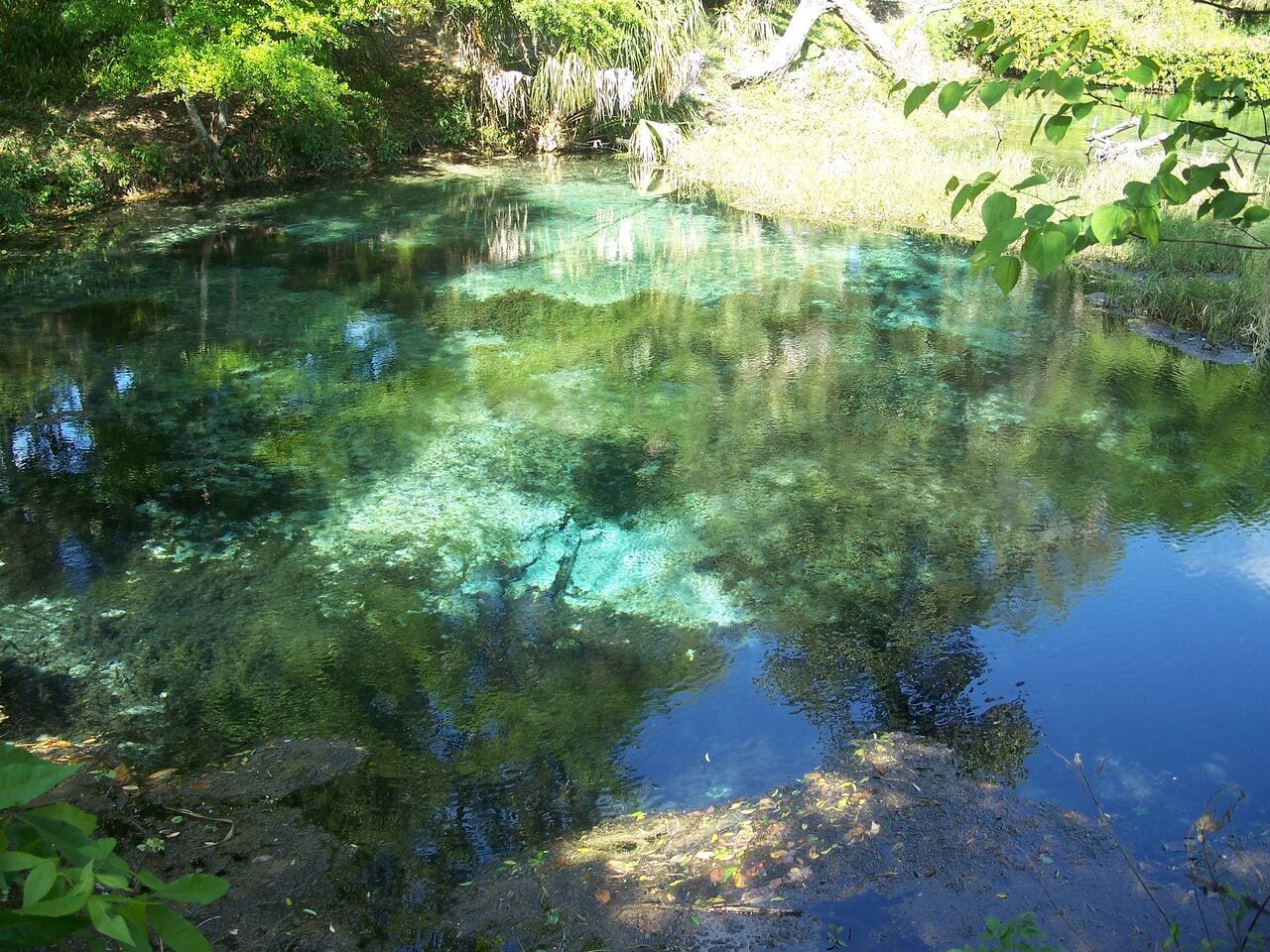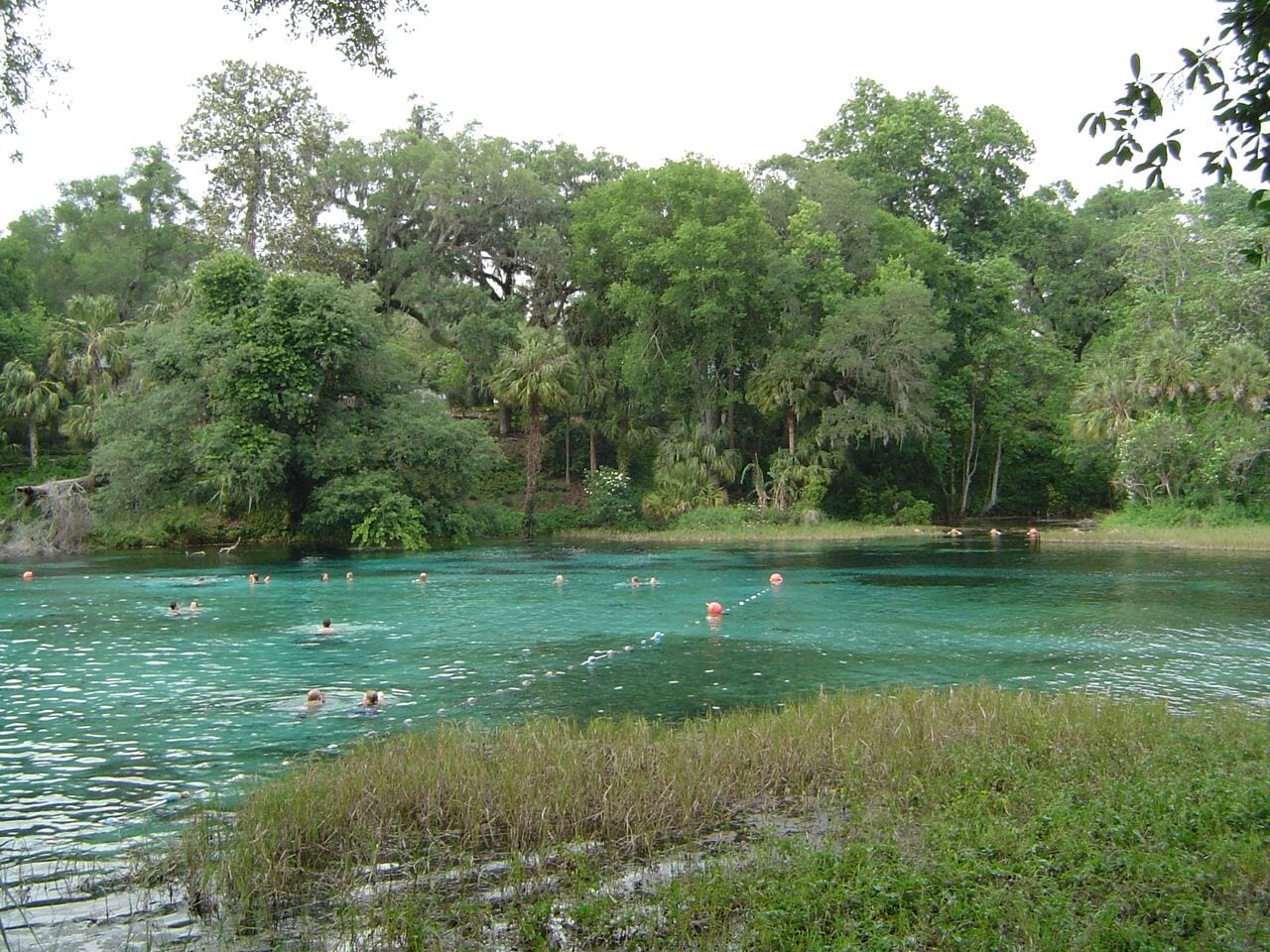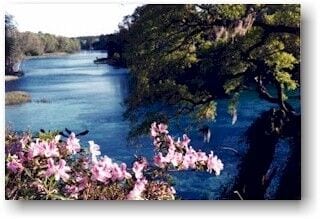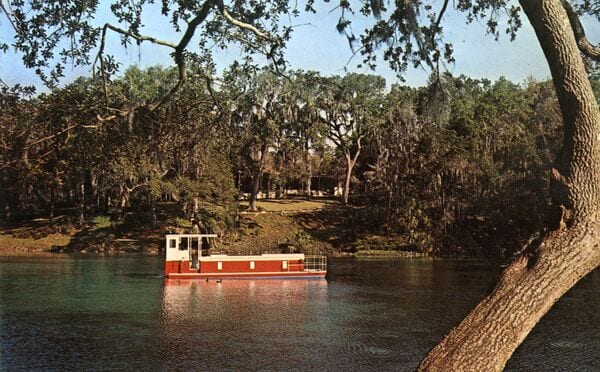Florida Waterways
“The Rainbow River”
By Kevin McCarthy
CAPTIONS
1. A map showing the location of the river
2. The headwaters of the river
3. A walkway through the woods there
4. Swimming at the springs
5. One of the springs along the river
6. A glass-bottom boat at the springs
A Florida river with a very different kind of history from most rivers is the Rainbow in southwest Marion County near the town of Dunnellon. Located about twenty miles southwest of Ocala and a hundred miles northwest of Orlando, the river is only about six miles long and joins the Withlacoochee before heading west into the Gulf of Mexico.
The start of the Rainbow River is a first-magnitude spring, the fourth largest such spring in the state, that pours 400 – 600 million gallons of fresh water into the river every day, All along the river smaller springs discharge even more water into the river, making it deeper and wider as it flows west. The spring and the river are two of what many of us consider the finest group of waterways in the country, maybe the world.
The headwaters of the river used to be the site of a park that was very popular in the 1930s, complete with glass-bottom boats that took visitors over the crystal-clear waters that measure a swimmable 72 degrees Fahrenheit. When major highways like I-75 took traffic away from the area toward Walt Disney World, the resort at Rainbow Springs faded in popularity and closed in 1974. The State of Florida took over the site and made it into the popular Rainbow Springs State Park, where visitors can swim, canoe, picnic, or just stroll along the meandering walking paths.
Archaeologists tell us that Native Americans lived in the area ten thousand years ago, but the modern popularity of the area resulted from the discovery of hard-rock phosphate in the late 1880s, which brought more settlers there. Nearby are two ghost towns, Juliette (respelled from Shakespeare’s Juliet) and Romeo, both apparently named after a girl and boy who loved each other, but were forbidden by their families from getting together.
Officials named the Rainbow River a Registered Natural Landmark (1972), an Aquatic Preserve (1986), and an “Outstanding Florida Waterway” (1987), three years before the State of Florida bought the original park area in 1990, cleaned it up, and opened it up to the public in 1995.
Boaters and swimmers today can see many species of fish in the clear waters, as well as different types of wildlife and plants. Probably the quietest time to visit the river and park is in the winter, when one can still swim in the water, but also see much of the surrounding wildlife from the walkways, especially the two-mile-long trail. One may even see some of the small waterfalls and former phosphate pits. The Rainbow River is one of the gems of our North-central Florida waterways.
Kevin McCarthy, the author of “North Florida Waterways” 2013 – (available at amazon.com), can be reached at ceyhankevin@gmail.com.

